Another model from Aquastar, this time one of their divers watches, the Benthos 500…
(Click pictures to enlarge)
Produced between 1962 and 1972, this was Aquastar’s first diving watch, the model name “Benthos” coming from Greek for ‘the bottom of the sea’ and “500” being the depth in meters to which the watch is water resistant. When first released, the Benthos was the first diving watch to use round as opposed to flat gaskets which significantly improved water resistance.
There were several changes made to the Benthos throughout its production run, compare the following watch with mine and you’ll spot some subtle differences…
The case is wider, it has a different crown, the bezel insert is different (possibly made from a different material?) and there are a couple of small differences on the dial; no “SA” under the Aquastar Geneve logo and the ‘Swiss Made’ label is under the 6 marker, not between the markers.
The watch was made with two different calibres, both from A. Schild, the cal. AS1902 and the cal. AS2162. Both are 17 jewel automatic calibres, the main difference being the rate at which they run; the AS1902 at 21,600bph and the AS2162 at 28,800bph. (The one in my watch is a AS2162.)
Both calibres were modified to include a minute timer, you may have noticed the extra hand in the first picture. The timer is started using the pusher, which when pressed returns the minute counter hand back to the 12 o’ clock position. It then moves in sync with the minute hand to time a maximum of 60 minutes.
My watch arrived with more problems than I was expecting, though it was running, the minute timer didn’t work or reset properly and the dial and hands were in much worse condition than I thought…
A faulty minute timer seems to be a common problem with these watches, and when you see how it works, it’s not hard to understand why.
Here is a picture of the movement with the dial removed so you can see the minute counter mechanism….
The first thing to notice is that the whole movement is cased in a solid steel ring, the pusher lever is mounted on this ring and contacts the rack mounted on the movement.
When the pusher is pressed the rack turns and rotates the minute counter wheel back to zero. For the next 60 minutes the minute counter wheel and cannon pinion (on which the minute hand is mounted) rotate together until the mechanism is returned back to the state above.
The minute counter wheel sits between the hour wheel (removed in the picture above) and the cannon pinion with a friction washer between the two.
The friction washer performs two functions, firstly when the pusher is pressed it allows the minute counter wheel to slide over cannon pinion until the hand is back at zero and secondly, it provides the tension required to bind the minute counter wheel and cannon pinion making them turn together while the timer is running.
As you can imagine after almost 40 years of use, there is a good chance that the brass minute counter wheel has worn or the brass friction washer has lost some of its essential tension, causing the minute counter to slip and lose time. My watch had exactly that problem, but after spending some time on it, I managed to get it working again.
With the movement serviced and the timer fixed, it was on to the cosmetic issues. After removing the old lume from the dial and repainting the markers, I relumed the hands, repainted the minute counter and second hands and finally cleaned the case…
Rich.

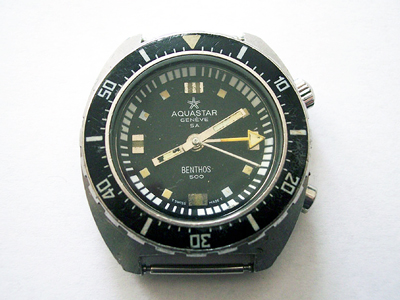
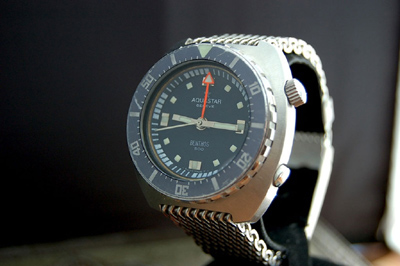
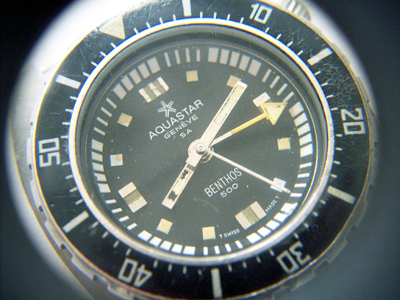
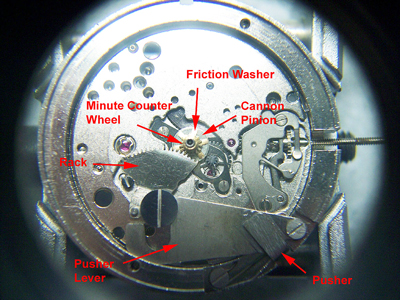
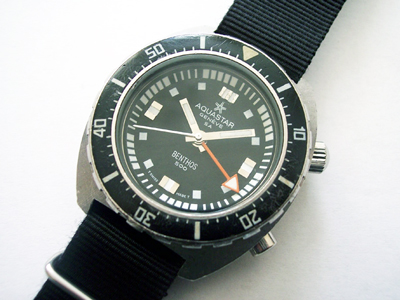
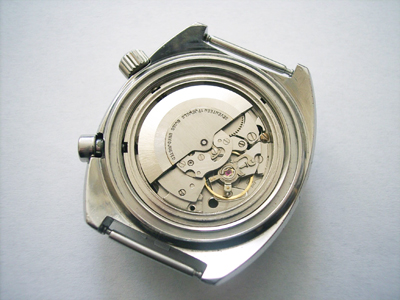
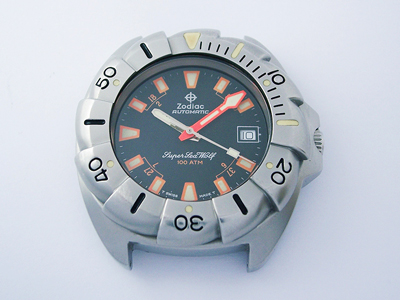
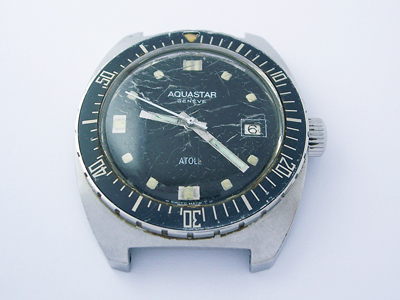
Hello, I have an Benthos which doesn’t have the friction washer and the minute hand is not working. Do you know if I can replace that washer with another one from another movement? It’s impossible to find an original one. Thanks!
Quality work and lovely watch to boot, all the best, James.
Hello; I have an Aquastar Benthos that I bought sometime in the late 1970s. It has been put away for many years and last time I took it out and tried winding it up, it didn’t work. I don’t believe it has a minute timer. Do you work on these? I can dig it out and take some pictures of it so you can see the model and serial number. Thanks.